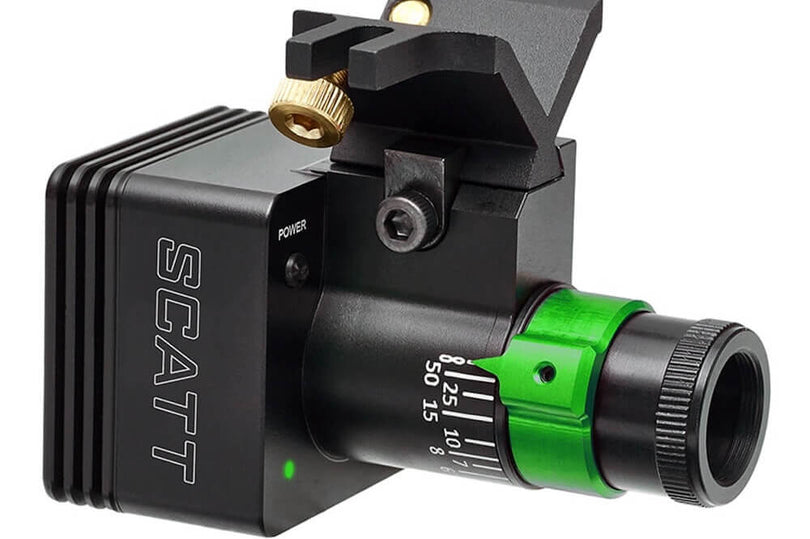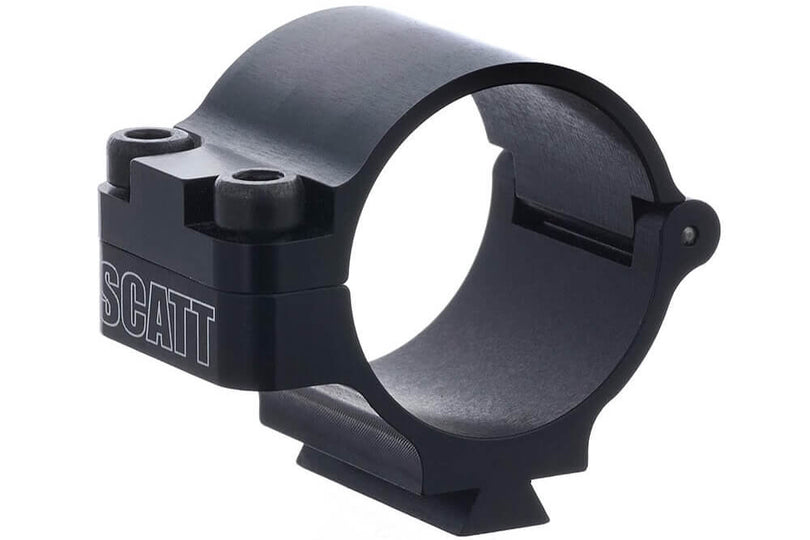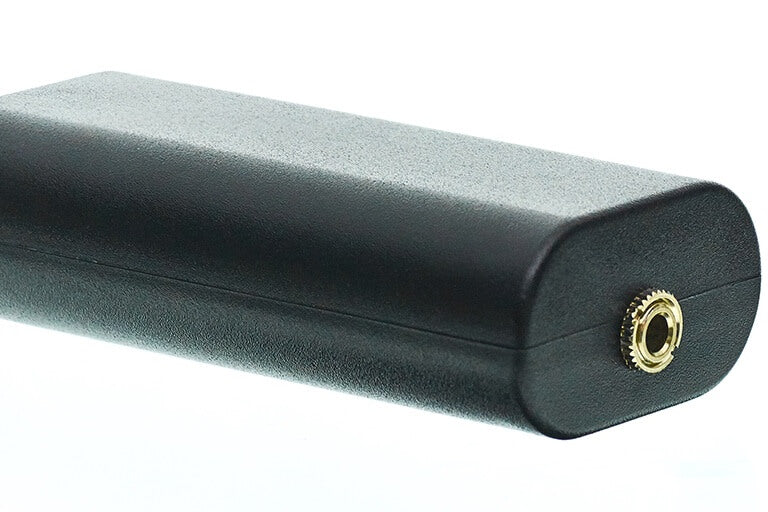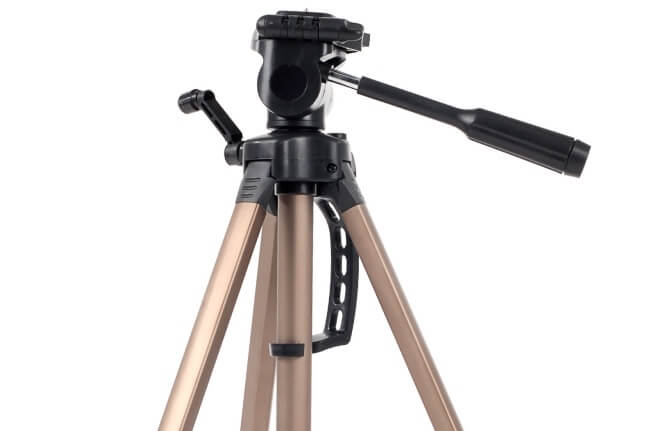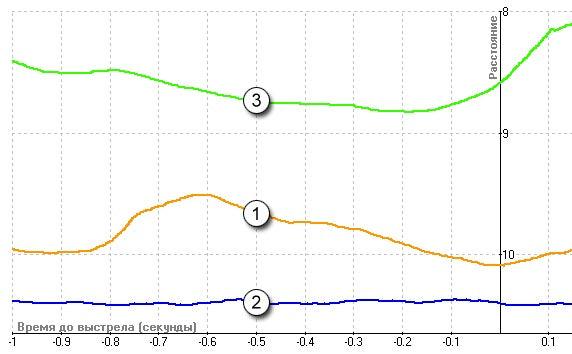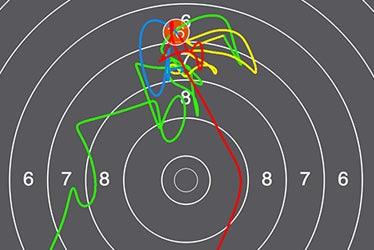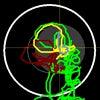The «Coordination Diagram» shows the time equal to one second to the actual time during which a shot is made along the X axis, and deflection from the centre of the target along the Y axis, while the resulting curve shows the mean deflection of all the aiming trajectories from the centre of the target.
Analysis of the curve makes possible the evaluation of a shooter’s skill and readiness at a given time.
The curve may be of three different types as follows:

- Smoothly descending prior to actual shooting
- Horizontal
- Ascending prior to actual shooting
The first and the second types of curves are as a rule indicative of a shooter in good form and of a successful training session, although one should also pay attention to the deflection of the curve from the centre of the target. Beginners often produce smoothly descending or horizontal lines, though being rather far from the centre of the target, this is not indicative of high standards. The third type of curve- the one with a slight ascent- relates the existence of a problem during the final stage of shooting. In other words, the weapon is shown to deflect from the aiming point prior to shooting.
The beginning of the curve’s ascent almost always lies within the range of 0.3-0.2 seconds before the shot is executed. It is related to the time of a human’s physiological response. While aiming, and having made necessary adjustments, a shooter makes a decision and instructs his finger «to pull the trigger». The time delay between having made the decision and executing the shot is 0.2-0.3 seconds.
The same is observed on the target while undertaking the simplest analysis of an aiming trajectory.
In the following example the aiming trajectory 0.2 seconds prior to actual shooting is shown in blue, while the trajectory 1second prior to shooting is shown in yellow.
It is evident that a shooter holds the weapon rather firmly in line with the centre of the target during the 1 to 0.2 second time span prior to actual shooting, but that the weapon is deflected from the aiming point during the last 0.2 seconds.

This phenomenon may be called the Number One problem in shooting. In fact, it is encountered by every shooter- from a beginner to an Olympic champion. When asked, a sportsman answers that either his finger fails to pull the trigger, or that the trigger is too hard to pull. Another common response is that the stability is good, but that at the point of shooting the weapon deflects from the centre. The main cause of the problem lies in the loss of control over the weapon’s position.
The origin of the error is as follows:
When making a shot a shooter must focus his attention on three main components: AIMING, PULLING THE TRIGGER, and CONTROL OF WEAPON’S POSITION. But, as is known from physiology and psychology, a person cannot effectively focus his attention on several actions at the one time. One action is OK, two is a considerably worse, while three and over are impossible to control simultaneously. This is precisely the case with shooting, where there are three elements.
Prior to shooting a shooter focuses his attention on AIMING and ARMS POSITION CONTROL ; after adjustment he makes a decision to PULL THE TRIGGER, but his concentration capacity is insufficient and he is forced to ‘borrow’ from the AIMING or the ARMS POSITION CONTROL actions, more commonly from the ARMS POSITION CONTROL, thus resulting in an inaccurate shot.
Let us address each of the actions one by one so as to better understand the problem.
ARMS POSITION CONTROL is always top priority. The arms position must be controlled prior to shooting, at the moment of shooting, and after shooting.
AIMING and PULLING THE TRIGGER are two actions of competitive priorities the relative significance of which has given rise to much disagreement and dispute.
Physiology provides us with the answer as to which should be accorded priority.
When focusing one’s attention on working muscles (finger) the response time, on average, is 0.2 seconds, while focusing one’s attention on the sensor system (aiming) yields a response time of 0.3 seconds.
In the 1980s the following experiment was undertaken with the involvement of the
shooters of USSR’s ‘National’ Team:
A monitor displayed a clock face and a light spot which moved along its periphery/circumference. Shooters were asked to stop the light spot at 12 o’clock sharp with a stop button. The results of the test were as follows:
- 10-15% exact stops/‘hits’ when focusing attention on the monitor screen
- 25-35% exact stops when focusing attention on the finger pressing
The above results are strongly suggestive of the fact that PULLING THE TRIGGER is always more important.
In conclusion, the shooter’s attention ought to be focused primarily on ARMS POSITION CONTROL and PULLING THE TRIGGER with AIMING remaining under passive control.
Following the above rule allows one to retain control of the ARMS POSITION during the final stage of shooting.
I would like to warn against the most common mistake when analysing the problem. When a coach learns that the most favorable time for a shot is 0.3 seconds before the actual shot, he tends to recommend that the shooter make the shot a little earlier/in advance. This does not help, however, as the main cause of the error, i.e. loss of control over the muscles keeping the arms in position, is not addressed.
Thus, if you see that the curve on the chart is ascending, the key conclusion and piece of advice is that you must aim to control the arms position before and during the execution of a shot.
Alexander Kudelin

